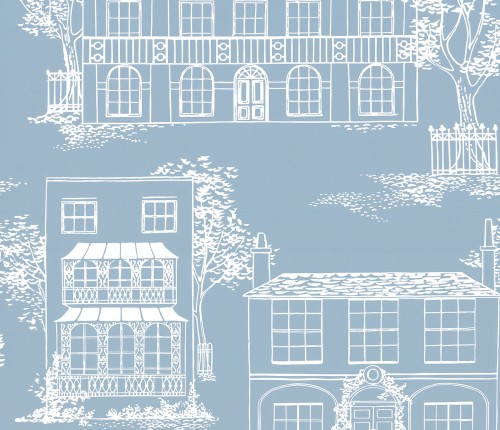On this bleak day in November when the next president of the United States is someone who has brandished climate change as a “bullshit hoax” and pledged to “cancel all climate change spending,” I’m questioning my efforts to cut carbon emissions and renovate green. But, discarding my eco principles would mess with my head even more than holding them, so I’m continuing with my efforts and have chosen the uplifting topic of wallpapers for today’s blogpost.
Choosing wallpaper puts me in even more of a flat spin than choosing paint colours. Add in the requirement that the wallpaper has to be “eco” and I’m reaching for the beta blockers. Googling eco wallpaper throws up a confusing array of options, many of which aren’t eco at all. But I’ve done some research, dug a little deeper and this is what I’ve discovered.
The sustainability of wallpaper is based on three elements – the paper it’s printed on; the inks/paints used in the design; and the way it’s manufactured. As with many products, some marketing teams decide that environmental credentials aren’t important to customers and I’ve found wallpapers that I love, that have good environmental credentials, but just fail to shout about them.
So the things to look out for are firstly that the paper used comes from FSC or PEFC certificated sustainable forests (recycled is even better but I’m still searching); secondly that the inks/paints used are either VOC-free or of the lowest rating; and thirdly that the manufacturing process is as local as possible and seeks to minimise pollution, waste and energy consumption. My top picks on this basis are:
Little Greene – printed on paper from sustainable forests (for every tree used, another four are planted); their paints and inks are virtually VOC free; and they are UK manufactured under good environmental practices.

Little Greene – Hampstead
Farrow and Ball – strong emphasis on the environment and with similar eco features to Little Greene’s wallpaper but unfortunately with an even higher price tag.

Farrow and Ball – Hornbeam
Miss Print – great for vibrant colours and non-uniform prints and a little cheaper than the two above! The whole range is FSC/PEFC certified using organic pigment inks and virtually VOC free paint. They are a mother-daughter duo working entirely out of the UK and supporting local community manufacturing.

Miss Print – Denver
Mini Moderns – I’ve only just found out about this exciting UK based company whose strap-line for their paint is Reclaimed Responsible Resplendent. Unfortunately their wallpaper isn’t made from reclaimed paper (yet) but it is from sustainably certified forests and uses water-based extremely low VOC paints. Exciting stuff.

Mini Moderns – One Day
Finally, if you fall in love with a wallpaper which isn’t from a publicised eco-range then call them up and ask about the product specifics. I fell in love with a paper from Blithfield & Co and was thrilled to find out that it is, in fact, environmentally sound but they just don’t publicise it. Also, the more feedback that large manufacturers receive from customers that environmental and health issues matter, the more chance we have of them adapting their products.
A final note, if you are renovating an old house – anything built before 1919 – then remember that old walls need to breathe and covering them in wallpaper or paints that don’t allow moisture to pass through them could lead to damp or condensation problems.
Also, if you’re going to all the effort of using eco wallpaper, use a natural wallpaper paste such as Auro 389 or Earthborn paste. Both are solvent and fungicide free and are great for absorbent surfaces in older houses. My sceptical decorator conceded that the Auro paste is better than the solvent-based one he usually uses – triumph!


Leave A Comment